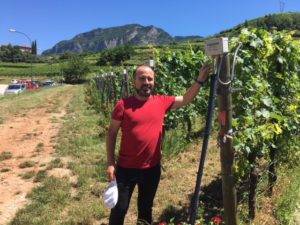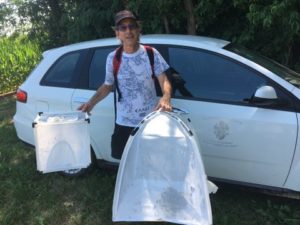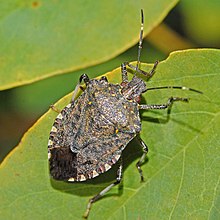

After a gap of 37 years between his first paper as a zoology student at Massey University on predatory and beneficial stink bugs, and only his second stink bug paper last year on sterilisation of Brown Marmorated Stink Bugs, Max Suckling is learning to be a bug hunter for this new invasive threat.

NZIAHS granted him a Trimble Award to visit colleagues in Italy, where the Brown Marmorated Stink Bug is rampaging through horticultural crops including apples, pears, kiwifruit, grape vines, corn and other crops.
His projects include gaining practical experience with traps and aggregation pheromone lures for surveillance and suppression, as well as further evaluation of the potential for the sterile insect technique to be used in the event of an incursion into New Zealand.
Regular interceptions by the Ministry for Primary Industries and media interest with ships being turned away have given BMSB work some urgency, which NZIAHS recognised.
The research team at Fondazione Edmund Mach near Trento, in northern Italy, are working on an exciting new lead against these types of bugs.
Pests such as the meadow spittle bug (present in New Zealand) and glassy winged sharp shooter (present in the Cook Islands) are vectors of a major bacterial pathogen (Xyllela) that is killing olives in Europe and has badly affected grapes in California.
These bugs use low frequency sound to communicate with each other and the Italian team are pioneering trapping and mating disruption systems, redirecting vibrational communication against the bugs in the same way that Max and colleagues have developed insect pheromones for horticultural crops in New Zealand.
He says Trimble Awards and other grants from the NZIAHS are an important means by which our researchers can pursue important new scientific leads, and members are encouraged to submit proposals.
* Dr Valerio Mazzoni is the organiser of the 2nd International Symposium on Biotremology, 4-6 September 2018 https://eventi.fmach.it/biotremology2018
* The TPP communication system is explained in a short Youtube clip called “Good Vibrations” (https://www.youtube.com/watch?v=1NDw74ZDW3g)
* Social media content on BMSB and be found at https://youtu.be/0KtzhItf2I0 and @profsuckling.












